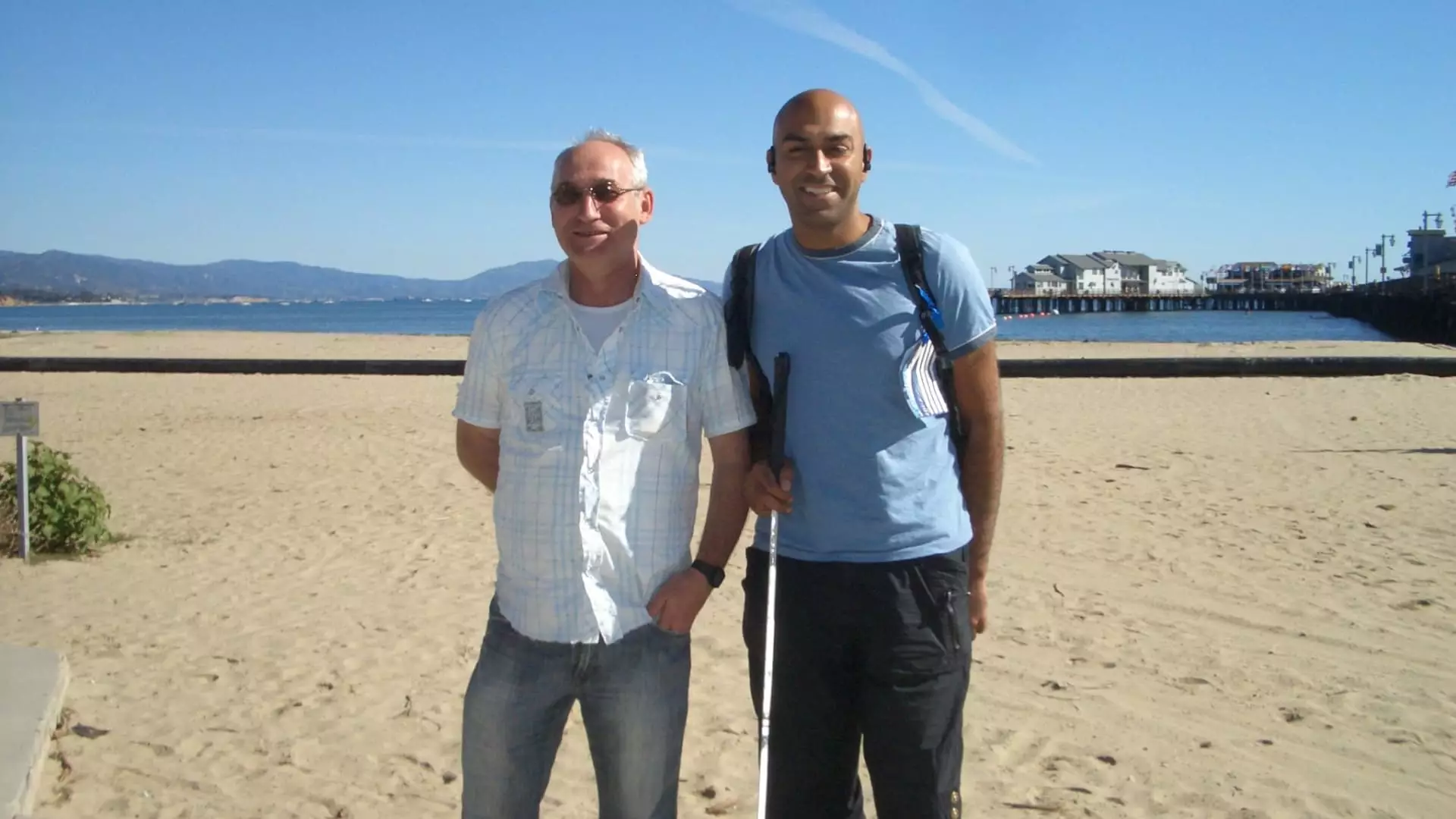For many, travel is a pure delight, a way to escape the everyday grind and immerse oneself in new cultures and experiences. Yet, for individuals with visual impairments, the adventure can often seem daunting or out of reach. However, organizations like TravelEyes are challenging this narrative, transforming travel into an inclusive experience that unites those who can see with those who cannot. Glyn Evans, a seasoned traveler and now a key participant of TravelEyes, epitomizes how such initiatives can create life-changing experiences.
Evans, who resides in Lincolnshire, U.K., recalls his memorable stint as a best man at an impromptu wedding during a trip to Las Vegas. The couple, both visually impaired, chose to marry on a whim during a group tour organized by TravelEyes. This experience not only showcases the unique possibilities that TravelEyes offers but also highlights the essence of human connection within shared adventures. Unlike traditional travel narratives, this story presents travel as a bridge between diverse experiences and perspectives.
Founded by Amar Latif, an entrepreneur who lost his sight at age 18, TravelEyes emerged as a response to the limitations imposed by conventional travel services. Latif personally experienced the barriers that blind and visually impaired individuals often face, being told he could only travel with a caregiver who would act as his constant guide. This disparity sparked his ambition to create a service that promotes equality among travelers.
TravelEyes offers more than just a travel itinerary; it cultivates a collaborative atmosphere where both sighted and visually impaired participants contribute to one another’s experiences. Sighted travelers provide crucial descriptions and insights about their surroundings in exchange for the enriched perspective and enjoyment of shared experiences. Latif’s vision is clear: travel should not be a luxury reserved for few; it should be an accessible journey enjoyed by all.
Drawing on his extensive experience as a volunteer for the blind community, Evans emphasizes the significance of communication throughout the journey. Each traveler brings their unique desires and curiosities, making it essential for sighted companions to gauge their preferences. Some participants seek detailed information about historical sites, while others prefer casual discussions or simply enjoy moments of silence. This dynamic encourages travelers to engage with one another, fostering relationships that transcend the barriers of vision.
The depth of these connections is evident in the interactions shared among travelers. Evans and his partner, Caroline, often reminisce about the profound friendships established through these journeys. The couple has organized gatherings for fellow TravelEyes participants, reinforcing the idea that travel can cultivate a community bound by shared experiences rather than by sight.
One of the unique aspects of traveling with TravelEyes is the emphasis on multisensory experiences that go beyond mere visual sightseeing. Evans recounts moments that stand out, such as feeding lions in a South African safari or interacting with cultural artifacts in Peru. For visually impaired travelers, the world transforms into a tapestry of textures, sounds, and smells, offering a different but equally enriching experience compared to traditional tourism.
Latif’s approach encourages all participants to fully engage with their surroundings, making memories deeply rooted in sensory experiences. This engagement is a vital lesson for both sighted and visually impaired travelers; it offers them a new lens through which to appreciate the world.
TravelEyes is not just about pairing sighted and visually impaired travelers; it’s about fostering empathy and understanding. Sighted travelers become the eyes for their companions, yet they also learn to break the habit of viewing the world through a digital lens. By having to describe their surroundings in vivid detail, they develop a deeper appreciation for every nuance in their environment.
Latif underscores that the guiding experience can be intimidating at first; however, it’s essential to remember that communication is key. Sighted individuals are encouraged to become proficient in guiding techniques, enabling a liberating experience for both parties. Within a short span, the reservations fade, paving the way for enriching interactions.
As TravelEyes continues to expand, it exemplifies how travel can be reimagined. By prioritizing inclusivity and collaboration, the initiative breaks down barriers and offers astonishing journeys that celebrate diversity. For individuals like Glyn Evans, these adventures transcend mere vacations; they become transformative experiences, fostering friendships and instilling joy.
Ultimately, TravelEyes not only unveils new horizons for travelers but also reflects a profound understanding of the human experience—one in which each individual’s perspective enriches the collective journey. By embracing this philosophy, we can hope for a world where travel is uniformly accessible, opening doors for all to explore and connect.

